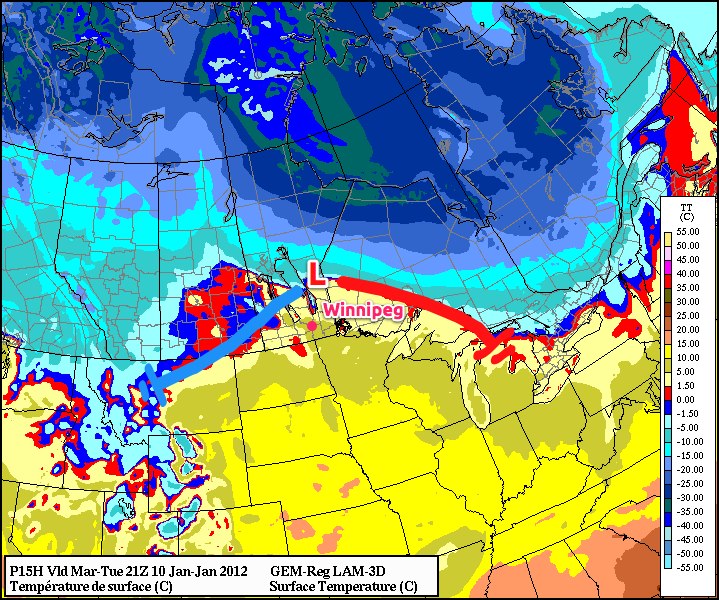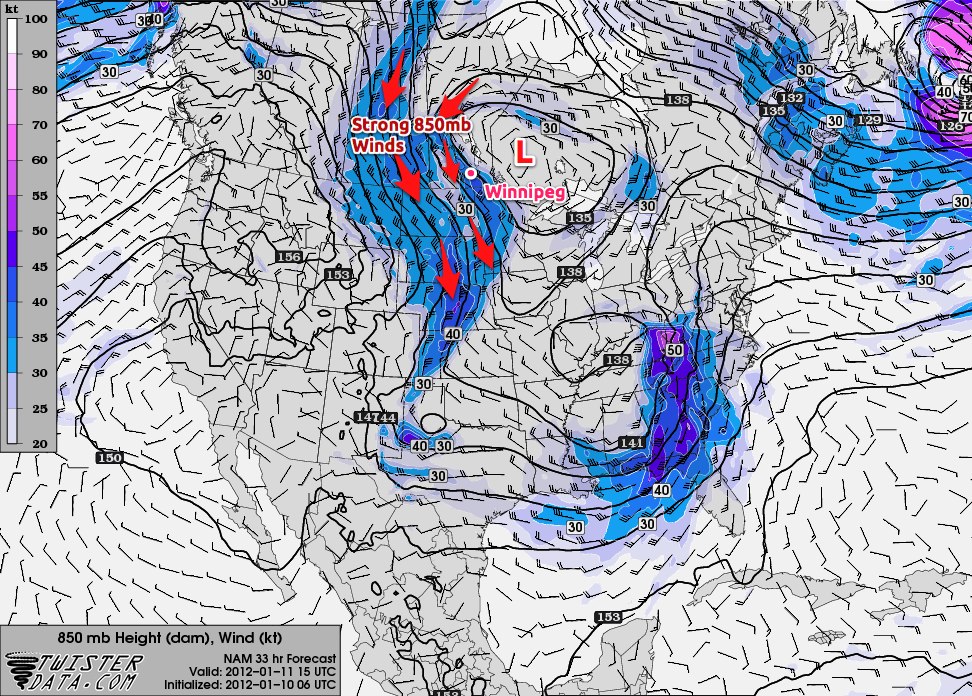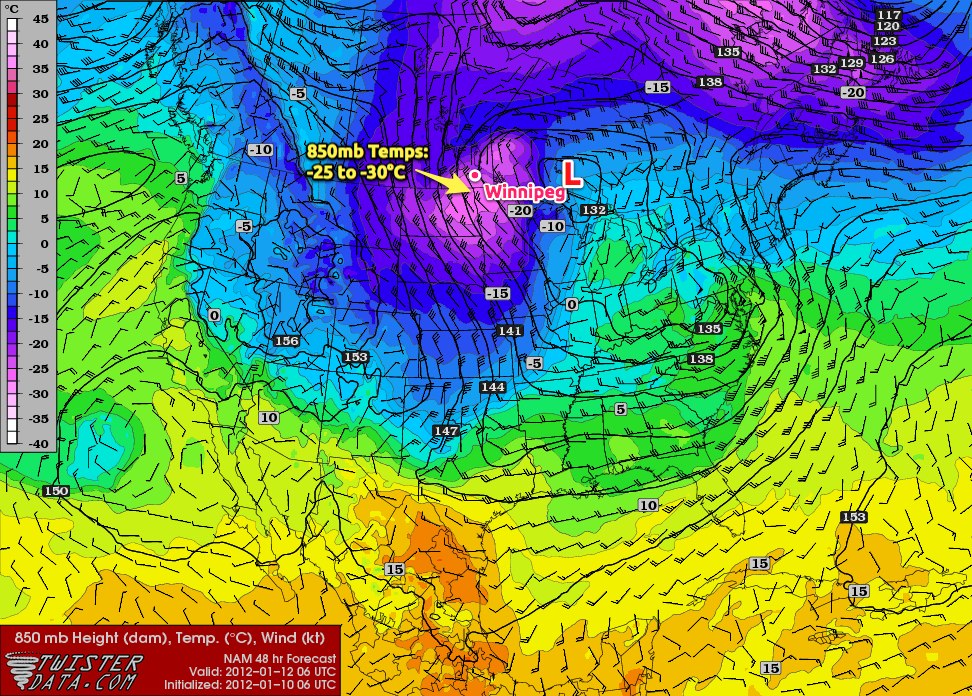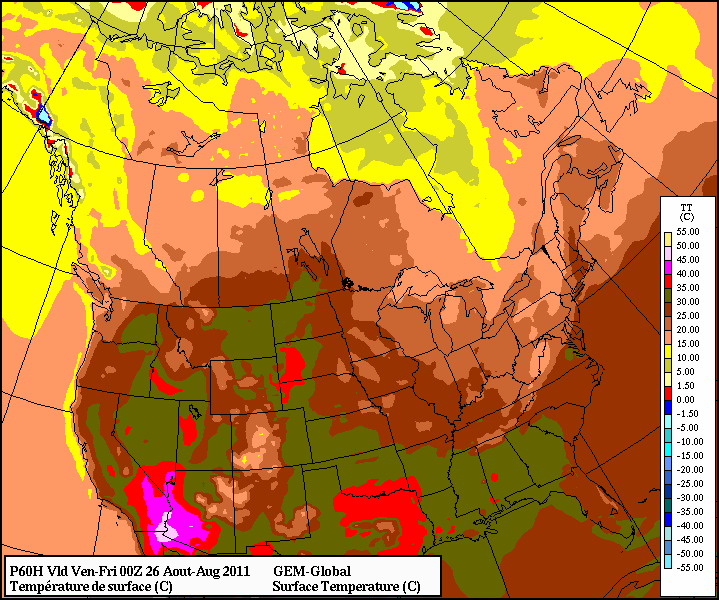Winnipeg has enjoyed 32 consecutive days with above average temperatures, making this one of the more pleasant winters in recent memory. This is about to abruptly change as winter is making an ungraceful return tonight. Before that, however, is another beautiful day with a good chance that more daytime temperature high records will be broken.

This afternoon will bring more record-setting temperatures to southern Manitoba as the area is drenched in one last shot of Pacific air. By mid-afternoon, Winnipeg will be firmly in the warm sector, and with 850mb temperatures of 2 or 3°C, temperatures should reach as high as 6 or 7°C through a majority of the RRV, Winnipeg included. There is a slight chance that some areas close to the western escarpment of the RRV could see another day of 9 or 10°C with the extra push from downslope winds and their continued lack of snow cover. That being said, I fully expect daytime high records to be broken in many communities in the RRV today.
Tonight, however, is a whole different story.
Winter Returns
After being held well to our north for over 4 weeks, Arctic air will surge across the Prairies today and tonight, bringing a drastic change to the weather. The cold front will sweep through Winnipeg between 00Z and 03Z (6PM & 9PM, respectively), ushering strong northwest winds and much colder air. Much of the southern Prairies will see snowfall with this system, with areas closer to the international border receiving 2-4cm. Winnipeg will be near the northern fringe of the snowfall, but I think that we’ll see at least 2cm of snow here. I think that 5cm is very unlikely, but there is still some uncertainty in how intense the band of snow will be. The most significant snowfalls will occur through the Northern Interlake, where they’ll be under the influence of a hang-back trough from the main low pressure system, bringing them snow for a longer period of time than us in the southern portions of the province.

With winds at 850mb forecast to be 30-40kt, surface winds have the potential to gust as high as 70km/h overnight. Likely, we’ll see a period of sustained winds near 50km/h before things settle out with sustained winds near 40km/h with gusts to 60km/h. Combined with temperatures that should fall to near -15°C tomorrow morning, wind chill values will be as low as -25 overnight.

A second cold front will pass through the RRV between 15Z and 18Z tomorrow morning (9AM and Noon), reinforcing the strong winds and causing temperatures to either remain steady or drop through the afternoon. The gusty northwest winds should continue through the whole day, with some light flurries and temperatures that will start near -15°C and drop to close to -20°C by evening. These temperatures combined with the wind should result in wind chill values near -30 for most of the day.
Normal daytime highs for this time of year are around -13°C and normal overnight lows are around -24°C. For the first time in over a month, Winnipeg will experience below-normal temperatures.
Extremely cold air at 850mb will move over the southern portion of the province Wednesday night; with 850mb temperatures in the -25 to -30°C range, we can expect overnight lows close to -25°C for Wednesday and Thursday night, with a daytime high on Thursday barely above -20°C. The GEM-REG is a little warmer than the NAM on the cold air moving over the RRV, so there is a chance of temperatures being a couple degrees warmer than this, but I’ll always bet on the cold air.
Fortunately, it looks like the cold weather will be relatively short lived. Current indications are that another low tracking across the Prairies should push warmer air into Winnipeg for the weekend, with daytime highs near -5°C. More on that later in the week.
UPDATE: 6 records fell again today across Manitoba as most places enjoyed yet another mild day.
td { text-align: center; }
| Location | New Record |
Old Record |
Old Record Year |
| Fisher Branch | 4.9 | 2.4 | 2002 |
| Gimli | 4.7 | 3.0 | 1990 |
| Gretna | 7.5 | 2.6 | 2006 |
| Melita | 4.3 | 2.5 | 2002 |
| Pinawa | 6.5 | 3.5 | 1990 |
| Winnipeg (Tie) | 5.1 | 5.1 | 1990 |





